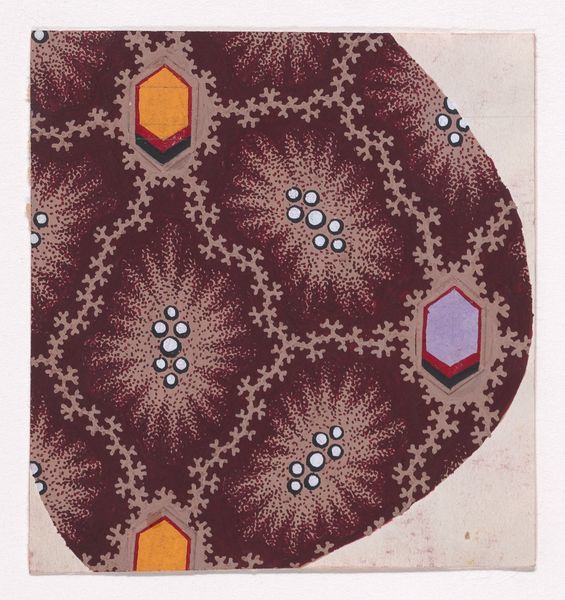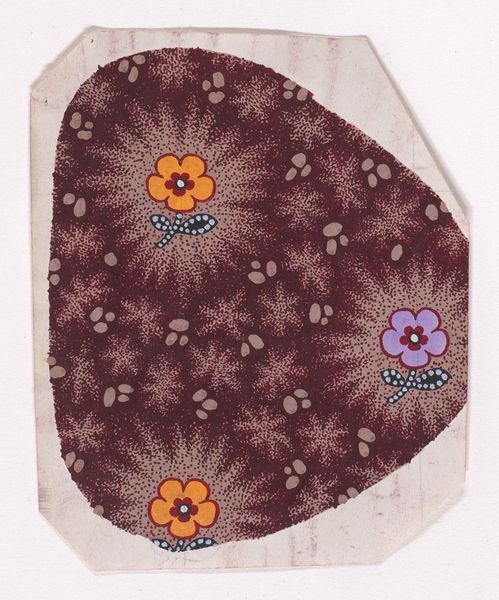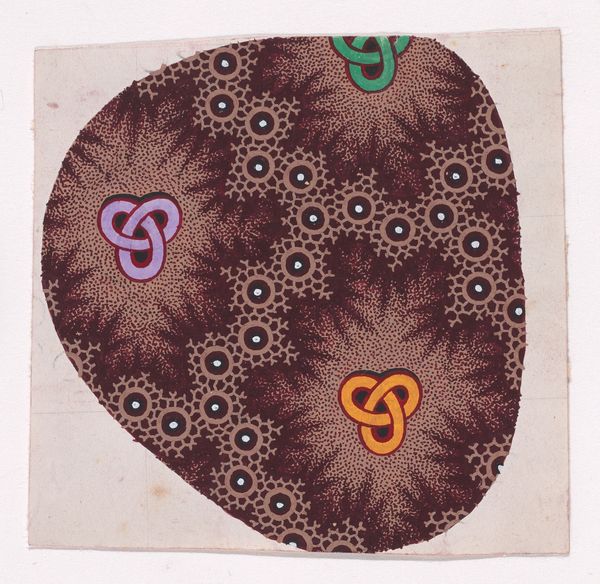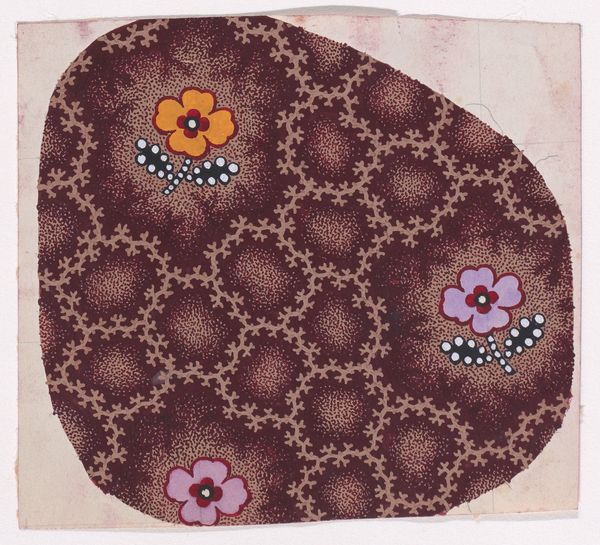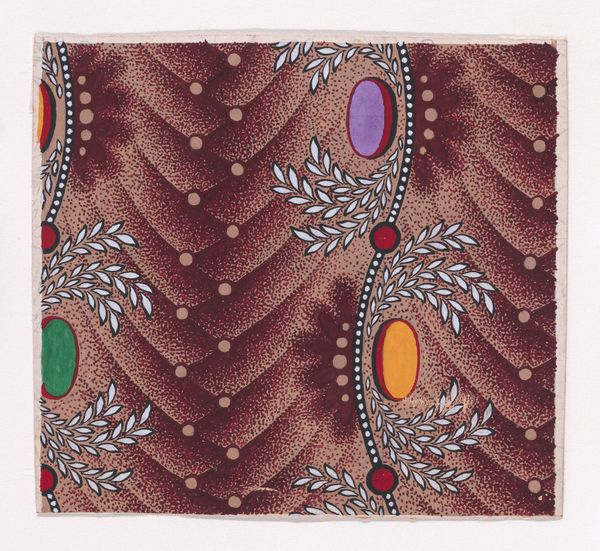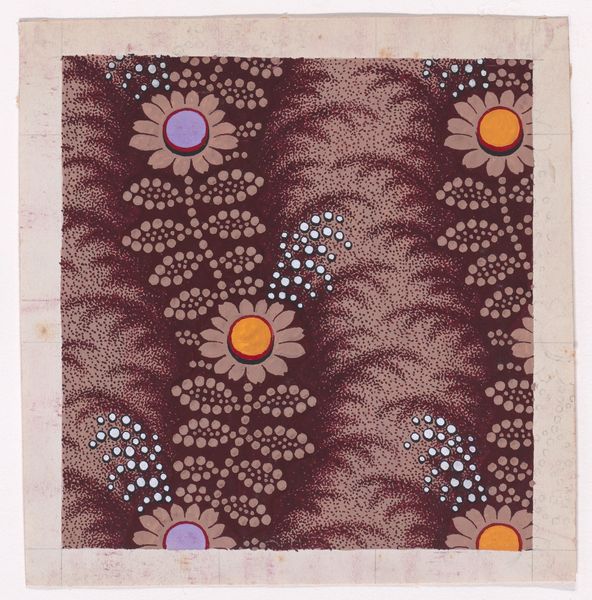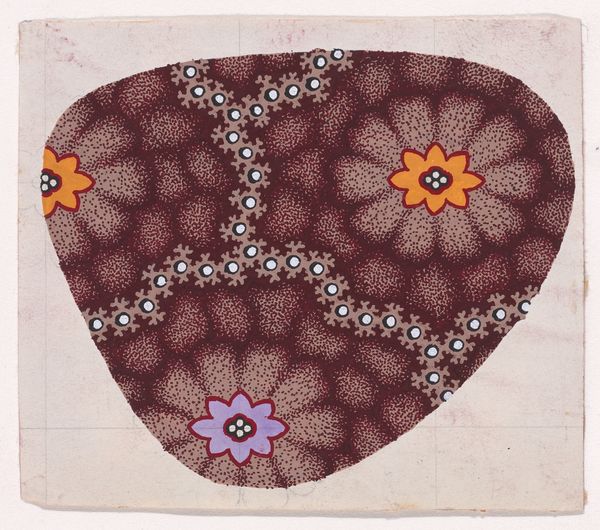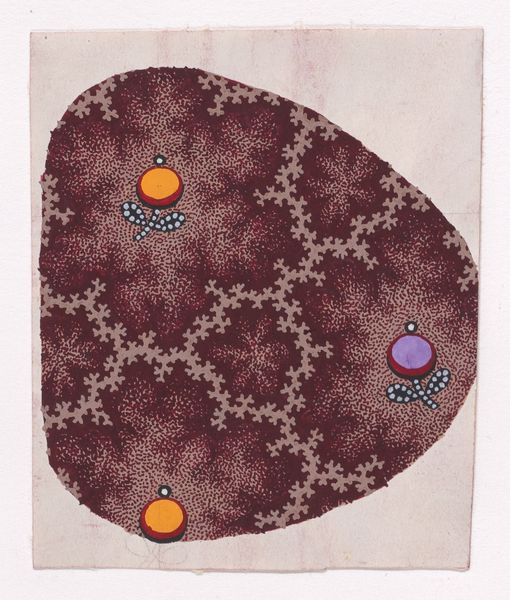
Textile Design with Alternating Vertical Stripes of Lozenges with Pearls in the Vertices and Abstract Organic Honeycomb Structures with Branch Offshoots 1840
0:00
0:00
drawing, mixed-media, print, textile, paper
#
drawing
#
mixed-media
# print
#
pattern
#
textile
#
paper
#
geometric
#
textile design
Dimensions: Sheet: 3 1/8 × 3 7/16 in. (7.9 × 8.8 cm)
Copyright: Public Domain
Curator: Looking at this pattern, I find myself drawn to its odd organic shapes and earth-tone colors. It projects such a muted, yet assertive energy. Editor: Indeed. This piece, dating from around 1840, is titled "Textile Design with Alternating Vertical Stripes of Lozenges with Pearls in the Vertices and Abstract Organic Honeycomb Structures with Branch Offshoots." The artist, sadly, is anonymous. This textile design incorporates drawing, mixed media, and printing techniques on paper. Curator: It's quite clever how the artist alternates those defined lozenges with the amorphous "honeycomb" stripes. The contrast draws my eye and creates visual tension. The color palette seems limited, but its deployment creates depth. It is almost unsettling to reconcile that geometry against those almost branching networks. Editor: Absolutely, the geometry combined with these strange honeycomb offshoots presents such a compelling paradox. But let us consider, what social factors might have motivated such unusual pairings? Consider the context of early industrial textile design during a time of significant social upheaval... Might we interpret these competing formal structures as symbolic of conflicting cultural ideologies? Curator: An intriguing proposition! And now that you've introduced the sociopolitical landscape of the era, I see this piece with an added dimension. Still, the design itself fascinates me, that repetition within a frame. It gives an illusion that there is no end to the repeating pattern. It creates an unusual push and pull relationship. Editor: You are right. We may be viewing here an argument concerning the artist's worldview regarding mass-production. I love it when a work from this era challenges my notions regarding aesthetic constraints, isn't that something? Curator: Absolutely! This little gem makes me eager to further explore the connection between material design, pattern work, and sociopolitical themes from the early Industrial Age. Editor: And I'm newly attuned to how structure, form, and careful deployments of color imbue textile works with a deeper symbolic power.
Comments
No comments
Be the first to comment and join the conversation on the ultimate creative platform.

